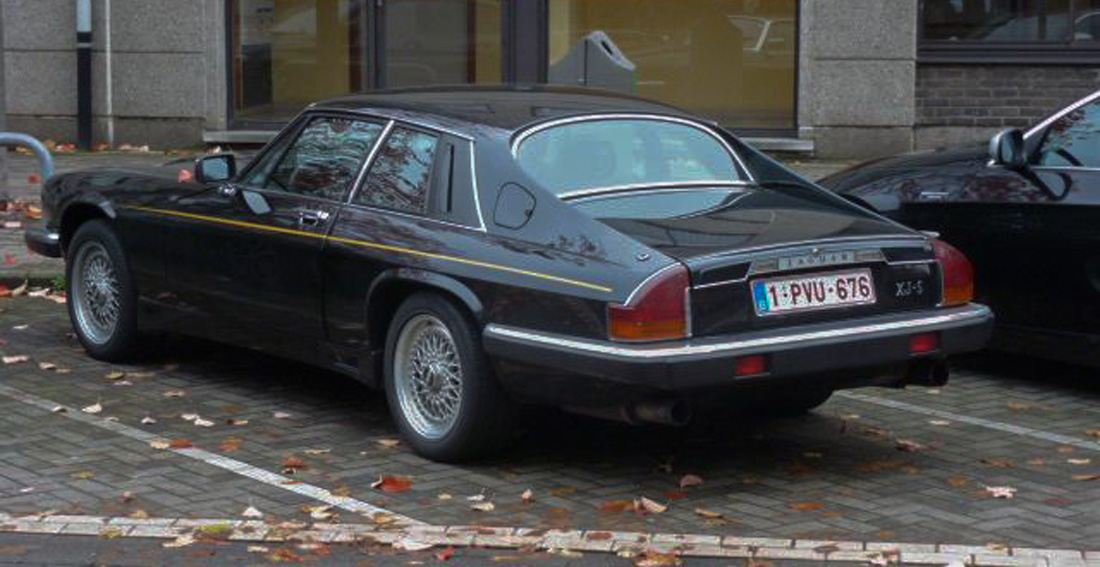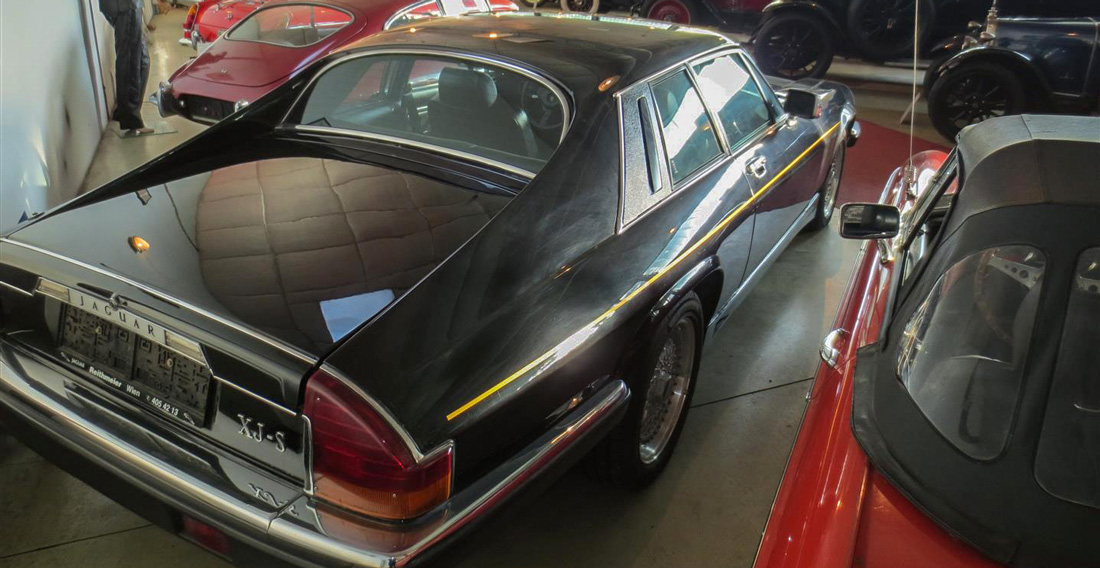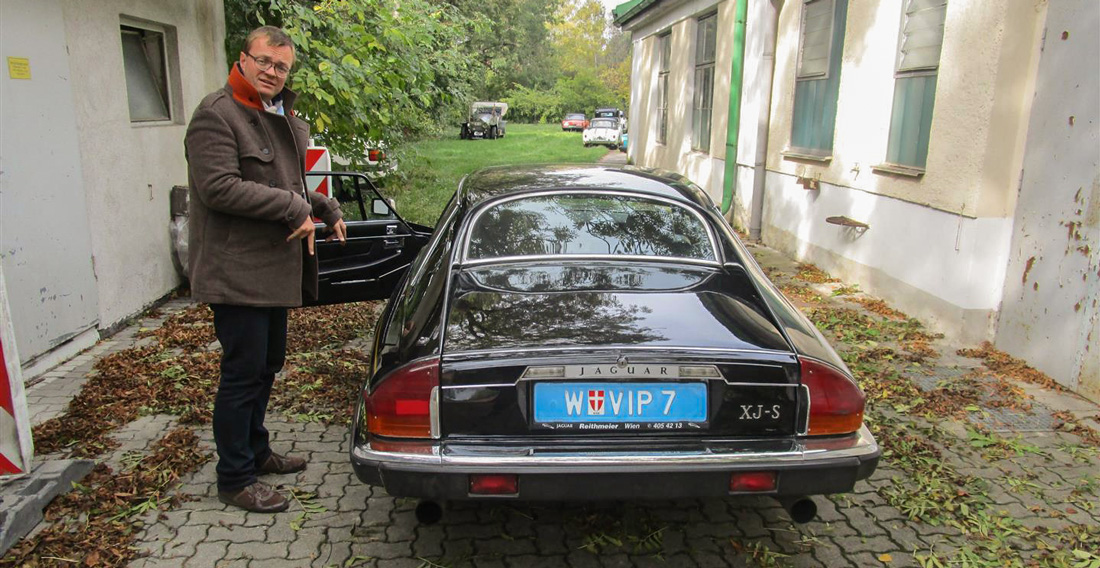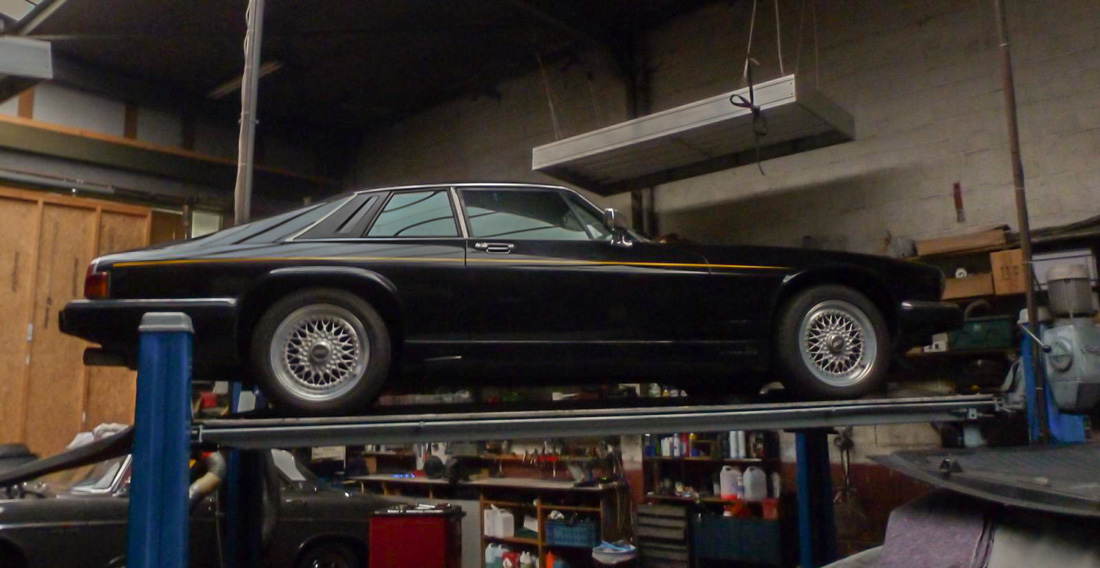
Alexandre B. sent us an article about his Jaguar XJ-S, which we do not want to withhold from you.
" Dear Dr. Barnea,
I promised you a long time ago when I bought the Jaguar XJ-S that I shall write a short article about it. It took much longer than I wish but here it finally is:
My 1979 Jaguar XJ-S manual – a journey from Vienna to Brussels
I have always been a petrolhead. During my early childhood I used to tell the names of the cars we walked along whilst I was in my pushchair. Then I started collecting and playing with car toys, invading the living room floor of the family house. When I was 17 years old I spotted an old Lancia in the street whilst going to school. At that time I was studying for my driving license and already dreaming about my first "real car". The next day I bought my first oldtimer magazine and I started to go and see old cars for sale.
After a 2 year-search all around Belgium I bought in 1998 a Volkswagen Scirocco MKI one kilometer away from our house. It reminded me of my grandmother's Scirocco and though it had a valid MOT the brakes weren't properly working, and I soon discovered that it had been rear-ended and bodged with filler, which triggered a full "in house" body restoration thanks to the help of another Scirocco-nut guy.
The rustproofed Scirocco became my daily driver in the summer of 2000, and I had to face lots of mechanical problems following the (mis)installation of a Liquified Petrol Gaz equipment by an unsupervised apprentice. I found out later during the insurance claim procedure that the day the car was booked in for receiving its LPG equipment the garage boss fainted and was sent to the ER, saying to the apprentice upon getting in the ambulance "get the installation in that car (my Scirocco) whatever it takes".
In the meantime I had met a girl whom I would marry a few years later, and during a trip in France with the Scirocco she spotted an old car she liked, and asked me what it was. "That is a Jaguar XJ-S" I replied. At that time the idea of owning a Jaguar was just unrealistic from a financial point of view, but each time she would see an XJ-S she reported it to me, usually adding something like "that really seems to be a nice car".
Fastforward to end 2014 – beginning 2015, when the specialized press began to talk about the 40th anniversary of the launch of the XJ-S at the Earls Court Motor Fair in September 1975. At that time I was the happy owner of a few "Youngtimers", among others a(nother) VW Scirocco MKI (bought in Germany), a Lancia H.P.Executive (the very same model I spotted years before on my way to school) brought back from the south of France, a BMW 3-series E21 (also from France) and a Triumph Stag (bought from the family of the first Belgian owner). The reading of the articles about the XJ-S triggered an internet search, and a few months later I became the proud owner of a 1977 Signal Red XJ-S, bought in eastern France from its second owner. When I came back home with the car our two sons were really excited about the car, and they baptized it "Flash" in reference to the cartoon heroe "Flash McQueen" from the Pixar animation film "Cars".

Early Version - called ex-post "pre-HE"
These early versions, called ex-post "pre-HE" (in reference to the 1983 introduced "High Efficiency" version of the V12 engine) were only available with a coupe bodywork and a V12 engine, most of them equipped with an automatic transmission. Out of these pre-HE models, I discovered that a mere 362 cars were fitted with a 4-speed manual gearbox. These cars were the only XJ-S V12 ever produced by the factory with a manual gearbox, the post-1982 V12 models being only fitted with an automatic gearbox, whereas the manual gearbox was exclusively offered on the 6 cylinder engine versions introduced as of 1984. These manual V12 cars were low-sellers, actually available as special order only as of 1978 until 1981. The 4-speed only gearbox is for sure a major reason for this failure. This could explain why the car sold by Mr. Barnea was officially exported to Austria on 1st February 1979 though it had rolled of the production line 20 months earlier, in May 1977, as confirmed by the Jaguar Daimler Heritage Trust (see below)!
As a consequence the probability of finding a decent running manual pre-HE XJ-S, preferably left hand drive, was extremely limited, so when I found an ad on www.autoscout24.be for such a model in Vienna I immediately called the vendor, Mr. Barnea, who immediately informed me that an Italian gentleman had phoned before me so I was in second position and should wait until the Italian person had seen the car, which was scheduled on the next Saturday. These were fairly long (waiting) days, during which the Jaguar Daimler Heritage Trust (JDHT) confirmed that the car was indeed one of the 352 manual version. JDHT also confirmed that the car was matching numbers, but not matching colors (it was originally light grey metallic). The car had indeed been repainted in black in the early 2000 in Austria, as shown by an invoice in the documents accompanying the car. It is also probably at that time that the car lost its original full plastic bumpers (replaced by later "HE" models) and flat motorcap (replaced by a more bulbous 6 cylinder model). The car was also fitted with non-original BBS alloys (instead of GKN Kent ones) as well as Arden sideskirts and a leather-trimmed Momo steering wheel.
In the end the Italian guy never showed up in Vienna so I was allowed to fly to Vienna and see the car in the flesh. On the plane I revised the checklist I had devised based on various articles about the XJ-S, and I wondered if I was crazy to fly to Vienna to see an old car, which could potentially turn to be a rustbucket. At that time the furthest distance I had travelled for a car was going by train to Lyon for my Lancia H.P.E. Mr. Barnea had kindly offered to come and pick me up at the airport where we met around a cup of coffee. Then Mr. Barnea drove me to his impressive personal museum in the suburbs of Vienna, where the XJ-S sat among other rarities such as an even more exclusive Rosengart Supertraction cabriolet.

The Jag - between other rare cars in Dr. Barneas Museum
After inspecting the bodywork of the XJ-S, which proved to be in very good condition, we extracted the car from the museum for a short test drive. The car was fortunately registered (and MOT'd) as Mr. Barnea had used it for an oldtimer-rally a few months before. The road test was also positive so after a few minutes thinking and a quick call to my friend Pascal, a Brussels based XJ-S nut, a deal was struck.

I then spent some very pleasant time helping Mr. Barnea and his colleague to move some cars of his collection – it was like playing with car toys in my parents' living room, but this time with real cars! – and we then headed back to the airport, with a quick stop at a restaurant where I was kindly catered with a slice of delicious apfelstrüdel, whilst discussing cars and other more serious topics such as politics with Mr. Barnea.
The next step was the delivery of the car to Brussels, which was again very kindly organized by Mr. Barnea who found a Czech driver. The car safely arrived in Brussels at the end of 2015, and was directly delivered to my friend Pascal's garage, where it was directly thouroughly checked by Pascal and his mechanician Alain, who confirmed the very good overall condition of the car, and even told me "it is the first time we receive a car bought abroad by a customer in such a good state, usually we always find horrors somewhere beneath the shiny paint…". This thorough check also showed evidence that the car was accidented at some point in its life on the right front side.

The car was then prepared for passing the Belgian MOT, but was firstly refused because it hadn't any chassis number on it… Either the car had originally no chassis number, or the chassis number was "lost" during the accident on the front right side. Anyway the car finally got its MOT and I was ready to go and register the car, but I was reluctant to let the Austrian "farzeugbrief" go to the Belgian state during the import and registration process, because this document contains not only a black and white picture of the car taken upon its arrival in Austria, but also the list of the 9 (!) Austrian keepers of the car. As a consequence I felt this document should stay with the car. After losing it … and finding it back hidden in a shoebox (probably by one of my boys) I was ready to go and having the car registered. Whilst queuing at the registration office I noticed an EU-registration document had been stapled to the original Austian farzeugbrief upon the last registration of the car. I unstapled it and handed it to the clerk with the other required documents when I was called at the desk. And it worked!
The license plates were delivered the next day and I finally could enjoy this great car! My XJ-S nut friend Pascal, who had been driving XJ-S for the last 20 years, had never driven a manual V12 one, and said after a test drive that it probably was the best version of the whole breed! He even baptized the car "Black Beast" after the evocative noise its non-oroiginal sports exhaust delivers. I can just agree with him. For the moment I just enjoy driving it, but I plan getting it back to its original specification, so I have started chasing the parts needed for doing so.

My "Black Beast" - finally registered
So that was the story of a classic car purchase. And that's what we call a review.
Be certain:
The purchase of a classic car is never an off-the-shelf purchase and with the vehicle you also buy a story. These stories are unique - just like the vehicles and also the buyers.
Stay healthy, your
Dr. Jackob Barnea
If you are also looking for a special classic car: Get in contact with us!







